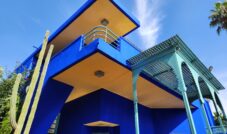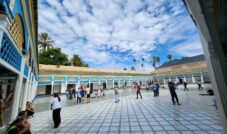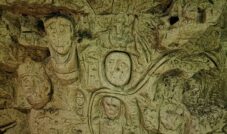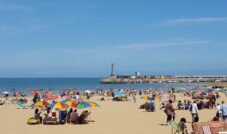Sagrada Familia is one of the most beautiful churches I’ve ever visited. The admission price is definitely worth it to wander around inside. Just look at the ceiling, columns and stained glass windows. I just love all the shapes and colours on display.
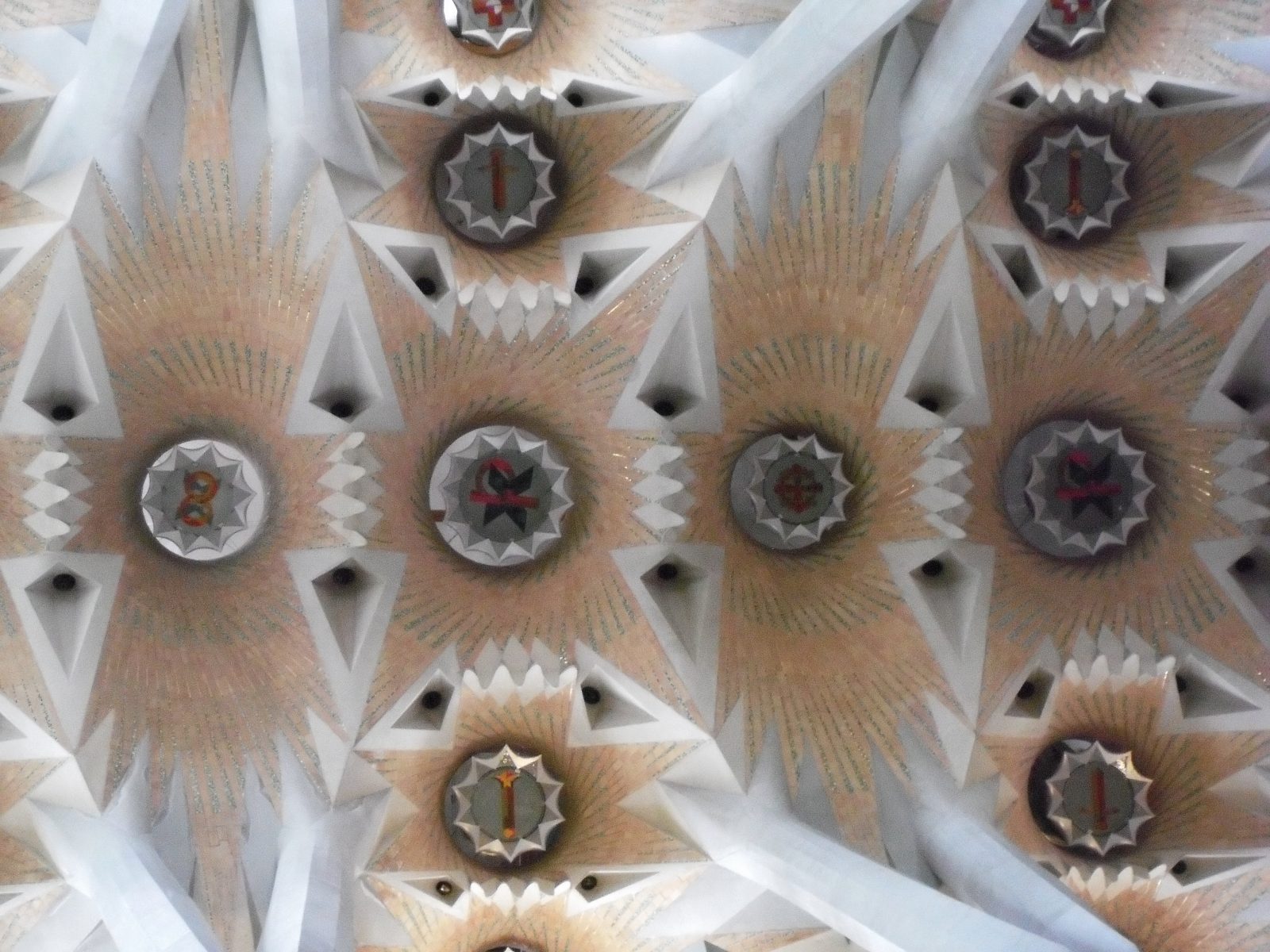













I recommend going to the top of the Sagrada Familia for the impressive views of Barcelona too.









What to see when visiting the Sagrada Familia
1. The Facades: A Story in Stone
La Sagrada Familia boasts three grand facades, each telling a different story of Christ’s life.
- The Nativity Facade: Located on the eastern side, this facade is the most ornate and depicts the birth of Jesus. It’s a celebration of life, with intricate carvings of animals, plants, and scenes of nature symbolizing the harmony of creation. The facade’s attention to detail reflects Gaudí’s deep connection to nature and his belief in the divine presence within it.
- The Passion Facade: In stark contrast to the Nativity Facade, the Passion Facade on the western side is austere and striking. It illustrates the suffering and crucifixion of Christ, with angular, almost skeletal figures that convey the gravity of these events. The simplicity and rawness of the sculptures are designed to evoke a sense of solemnity and reflection.
- The Glory Facade: Still under construction, the Glory Facade will be the most grandiose, representing Christ’s eternal glory and ascension to heaven. Once completed, it will serve as the main entrance to the basilica and is expected to be a stunning culmination of Gaudí’s vision.
2. The Towers: A Panoramic Perspective
La Sagrada Familia is renowned for its towering spires, which dominate the Barcelona skyline. There are currently eight completed towers, with plans to build a total of eighteen, each symbolizing important figures in Christianity.
- Climbing the Towers: Visitors can ascend the Nativity or Passion Towers via elevator, followed by a winding staircase that offers panoramic views of Barcelona. From the top, the city unfolds beneath you, with a breathtaking view of the mountains, sea, and cityscape, making the climb an unforgettable experience.
3. The Interior: A Symphony of Light and Color
Stepping inside La Sagrada Familia is akin to entering another world. Gaudí’s use of light and color transforms the interior into a vibrant, almost otherworldly space.
- The Columns: The basilica’s columns are designed to resemble trees, with branches that stretch upwards towards the ceiling, creating a canopy that filters light into the space below. This forest-like effect is central to Gaudí’s vision of merging the natural and the divine.
- Stained Glass Windows: The stained glass windows are a feast for the eyes, with colors that shift from cool blues and greens to warm reds and oranges as the sun moves across the sky. Gaudí meticulously designed the windows to capture the essence of natural light, creating a dynamic interplay of color that changes throughout the day.
- The Ceiling: Look up, and you’ll see a geometric masterpiece. The ceiling is adorned with intricate patterns, featuring hyperboloids and paraboloids that reflect Gaudí’s fascination with geometry and his desire to create a structure that appears both earthly and celestial.
4. The Museum: Gaudí’s Workshop and Legacy
The Sagrada Familia Museum, located in the basement of the basilica, offers a deeper insight into the mind of Antoni Gaudí. The museum houses models, sketches, and photographs that chronicle the construction of the basilica and provide a glimpse into Gaudí’s creative process.
- Gaudí’s Original Workshop: One of the highlights of the museum is the recreation of Gaudí’s original workshop, where he developed many of the innovative techniques used in the construction of the basilica. The workshop is a testament to his genius and dedication to his craft.
- Historical Exhibits: The museum also features exhibits that detail the history of La Sagrada Familia, including its challenges and milestones over the decades. It’s a fascinating journey through time, showing how Gaudí’s vision has been realized piece by piece.
5. The Crypt: A Place of Reflection
Beneath the main altar lies the crypt, where Antoni Gaudí himself is buried. The crypt is part of the original church built before Gaudí took over the project and is a quieter, more intimate space for contemplation. It’s a fitting final resting place for the architect, surrounded by his life’s work.
6. The School of the Sagrada Familia: A Unique Architectural Gem
Next to the basilica stands the School of the Sagrada Familia, a small building originally designed by Gaudí to educate the children of the construction workers. The building is notable for its undulating roof and organic forms, showcasing Gaudí’s ability to blend functionality with his unique architectural style. Today, it serves as an exhibition space, but its historical significance and design make it worth a visit.



